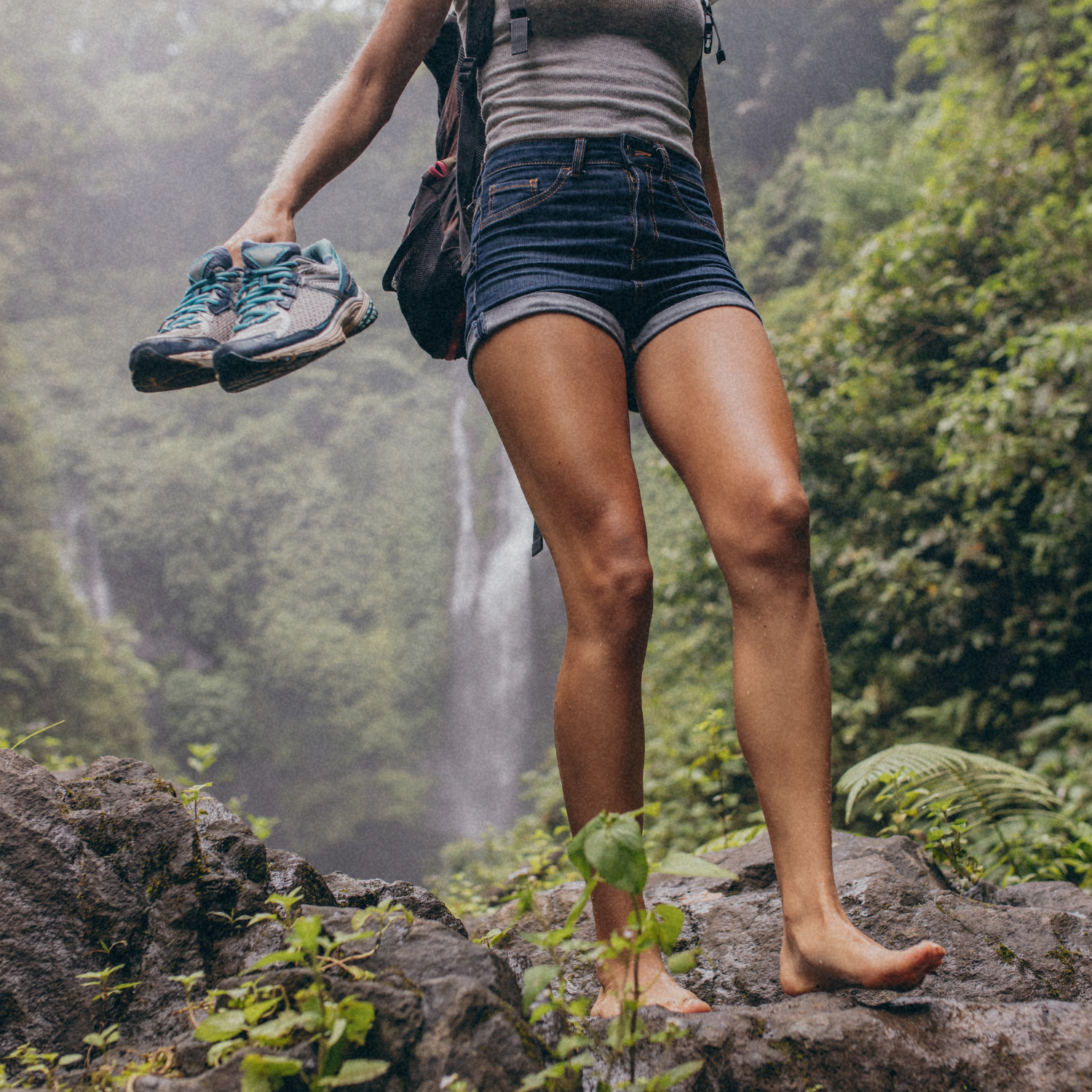It’s no secret: getting consistent, quality sleep is a challenge. But according to a published in Healthcare, the key to better rest could be as simple as kicking off your shoes, thanks to the benefits of grounding.
In the study, researchers in Taiwan investigated the effects of grounding—a practice involving direct contact with the Earth by lying on the ground or walking barefoot—on a small group of adults with mild Alzheimer’s disease. They found that 30 minutes of grounding, practiced five times a week, significantly improved the sleep quality of participants.
But it goes beyond sleep. Other studies have cited grounding as a potential tool to reduce inflammation, improve mood, and even aid in wound healing. Why is the simple act of going barefoot outside so powerful?
The Benefits of Grounding
Our planet’s electrical charges interact with our own electrical systems when we come in contact with the ground, says Gaétan Chevalier, the director of The Earthing Institute. This exchange of electrons neutralizes the acids in our bodies, which can cause inflammation, osteoporosis, and even mood swings if left unneutralized, he says. Better sleep is just the result of a more efficient system.
Our feet aren’t used to feeling sharp rocks, squishy grass, and rugged tree roots. But going barefoot isn’t so simple.
“We’re like a rechargeable battery,” says Chevalier, who holds a PhD in engineering physics. “When we ground regularly, we build a reserve of electrons that our body can use. When the body lacks electrons, it’ll try to get them from another source that’ll cause the least amount of damage possible, such as our bones.”
A 2004 study published in the suggested that reduced cortisol levels may be a possible explanation for this unexpected correlation. Cortisol, known as the “stress hormone,” can cause insomnia and poor sleep. After sleeping for eight weeks on a grounding mattress pad—a mat made of conductive material that transfers electrons directly from the ground via a wire—the cortisol levels of participants were more in alignment with their circadian rhythm, the body’s natural sleep-wake clock.
However, this research has some limitations. Chevalier says that while grounding mats provide similar benefits, it’s not the same as making direct contact with the ground. Similarly to the first study, the sample size was small, and the results were insufficient to draw any major conclusions.
Barefoot Living Makes for Healthier, More Dexterous Feet
Katy Bowman, a biomechanist and the author of the book , says going barefoot is critical for both our mental and physical health. Our evolution into daily footwear has resulted in sedentary, untrained feet, she says. While we may not think much of this complex network of muscles and tendons, our feet are actually meant to be as dexterous as our hands. Not regularly working this intricate system can lead to foot pain, as well as issues with our ankles, knees, hips, and back, she says.
When we walk outside without shoes, we’re exerting more effort—in a good way. Our feet aren’t used to feeling sharp rocks, squishy grass, and rugged tree roots. But going barefoot isn’t so simple.
There’s often a mental block to barefootedness. “Being outside is harder than being inside,” Bowman says. “We have a natural resistance to taking our shoes off. Because when you do, you have to engage with the entire world. Attentional awareness ramps way up when you’re barefoot. It’s like an instant drop down into mindful behavior.”
Going Barefoot Forces You to Stay in the Present Moment
Just like yoga, meditation, and journaling, grounding is a mindful practice. Ronda Holman, a dental assistant, says she got into grounding as a way to release stress. According to both her Apple Watch (via the Pillow app) and her Oura Ring, there was a significant shift in her resting heart rate on the days she practiced grounding. While she’s hesitant to give it credit for her newfound calm, she believes there’s something to it.
“It could just be the not doing anything,” she says, “Taking yourself out of a stressful environment, making you sit on the ground, and distracting you with the sounds of birds and leaves and wind.”
How to Practice Grounding for Better Sleep
The most alluring aspect of this practice is its simplicity. Unlike the usual strict rules for getting quality sleep, grounding requires little more than your bare feet and a willingness to expose them to the elements.
Currently, there isn’t any guidance on how long you need to spend touching the Earth, or what kind of ground you need to be on. Grass, dirt, sand, and other natural surfaces are all acceptable choices. Clinton Ober’s claims that even unpainted concrete is conductive enough for free electrons to pass through. (However, he says that asphalt, wood, and vinyl are not.)
If you live in a climate that doesn’t allow for a lot of shoeless outdoor time, an indoor option may be the next best thing. Grounding socks, mats, and even bedding sets are designed with conductive materials that can give you some similar benefits as walking outside, just for a higher price. While they’re a good alternative, always opt for direct Earth contact when you can.
We still have a lot to learn about the benefits of grounding and the Earth’s potential to put us to sleep. But at the very least, grounding is just another reason to get outside.
Want more �����ԹϺ��� health stories? .


